Scarsdale Students Continue to Fare Well on a Large Range of Assessments
- Tuesday, 19 November 2019 14:28
- Last Updated: Thursday, 21 November 2019 09:39
- Published: Tuesday, 19 November 2019 14:28
- Joanne Wallenstein
- Hits: 6705
 If you go by the numbers, students in Scarsdale are testing well – as compared to both local and national averages, reported Assistant Superintendent Edgar McIntosh at the November 18 meeting of the Board of Education.
If you go by the numbers, students in Scarsdale are testing well – as compared to both local and national averages, reported Assistant Superintendent Edgar McIntosh at the November 18 meeting of the Board of Education.
He cautioned that the district should continue to look beyond the tests and use the assessments to improve instruction, curriculum and learning environments for students. He also said the district would use their own metrics to assess critical thinking skills which are not necessarily included in state tests.
He said, the test results should “not be the sole evaluation of student achievement or an educational program because these tests are concerned only with certain basic skills and abilities and are not intended to measure total achievement for each subject and grade.”
However, by all measures it looks like Scarsdale students are thriving.
McIntosh discussed the following data as measures of the district’s achievements.
His report says, First, we look at the end results both in terms of college acceptances and on graduates’ reports on their successes after they leave Scarsdale. College acceptance results have always been excellent and have grown even stronger over the last two decades.
In 2019:
-98% of graduates are attending college
-96% to 4-year colleges
-64% of graduates were accepted at colleges and universities ranked “most competitive” in the U.S.
These statistics compare with 61% in 2010, and 57% in 2005. He said, “We do not know of another comprehensive, non-selective, public school district whose students achieve stronger results.”
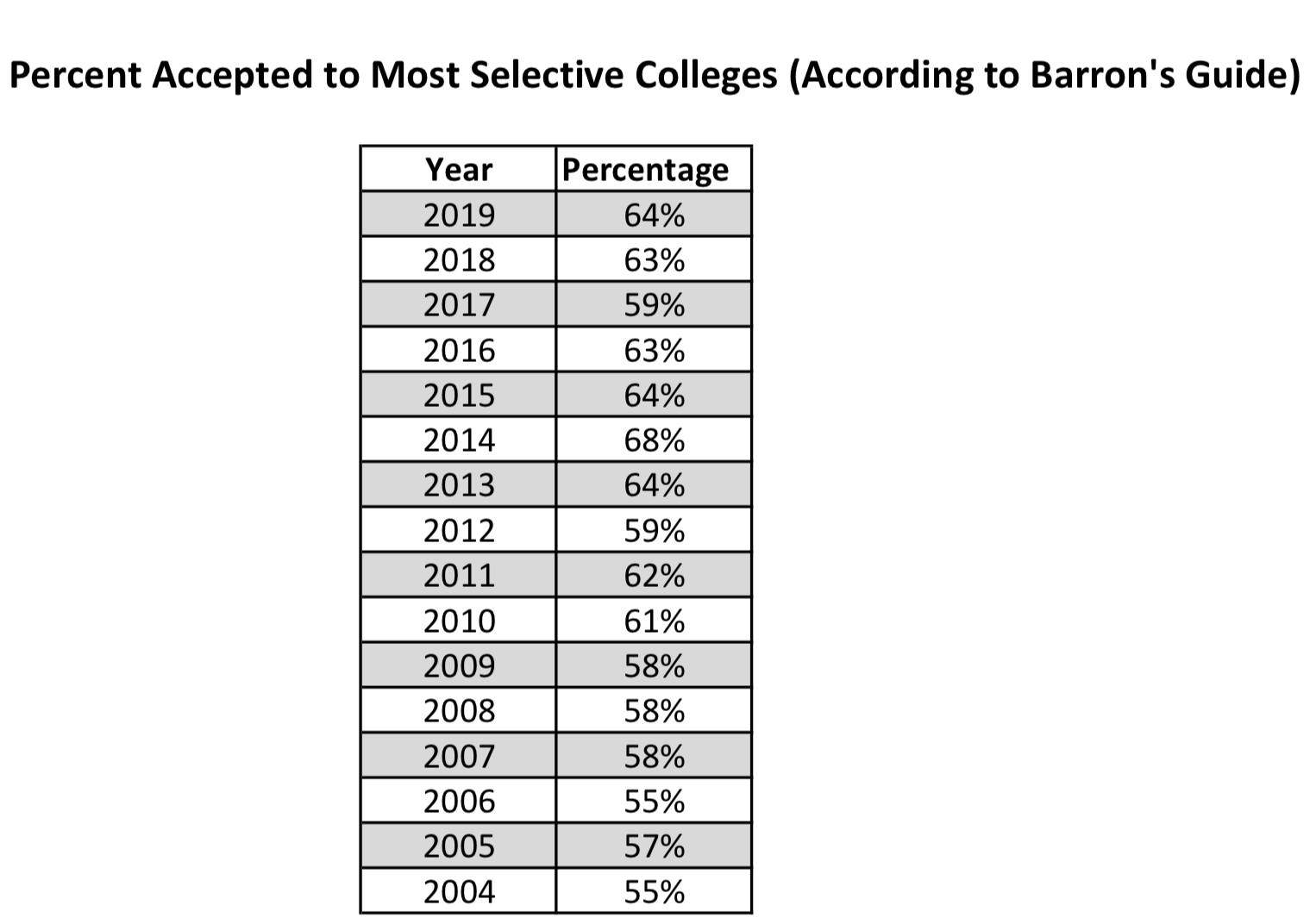
He shared an analysis of student performance on the SAT’s and ACT’s and AT tests in 2018-19
- Scarsdale’s Mean Combined SAT Score Results continue to be the highest among comparable districts in our region.
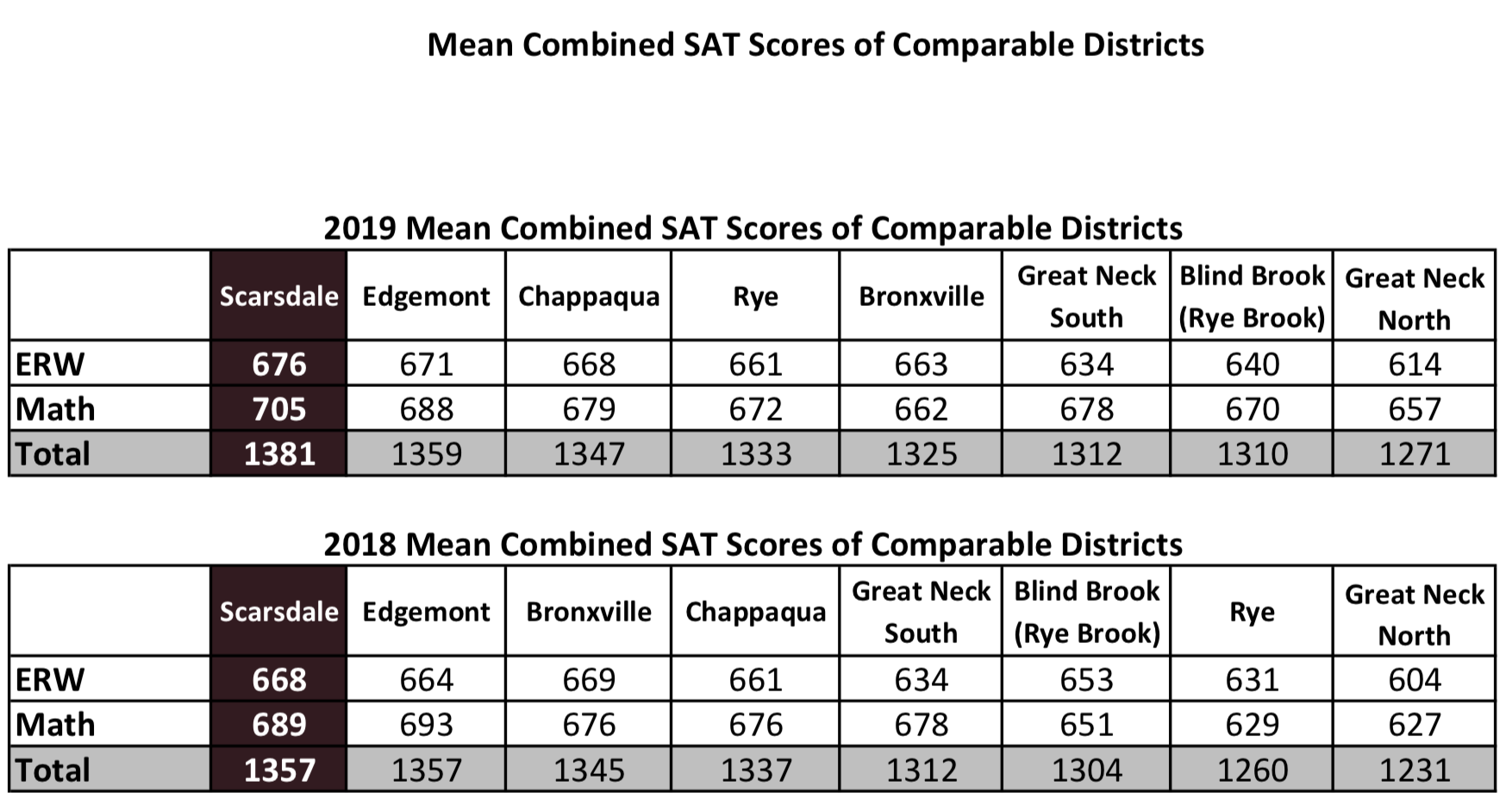
The percent of students receiving scores of 3,4,5 on AP Exams is 95%, which has been consistent.
He also believes that student involvement in extra-curricular activities and athletics is also a measure of the success of the district. He quoted a well-regarded researcher who said, “One of the most important measures of a school is the number of clubs that are available and how flexible those clubs were because it indicated a culture that supports the whole child and his interests.”
McIntosh presented the following data about student involvement for the Class of 2018-19:
The percentage of total student enrollment involved in extracurricular activities other than athletics: approximately 75%
Percentage of high school students participating in athletics:
-Fall (579/1552 [37.3%]);
-Winter (448/1552 [28.9%])
-Spring (504/1552 [32.5%])
All three seasons without duplication (950/1552 [61.2%]).
Reviewing the results of the ELA and math tests given to elementary school students, McIntosh found:
Overall, test scores were among the strongest in New York State and in the same range as those in a selected group of comparable districts.
While year to year there is variation in the test results between elementary schools, the overall school-to-school differences in elementary students’ scores were not significant.
As in past years, Middle School scores inconsistently predicted student High School performance on Regents examinations, which continued to be strong.

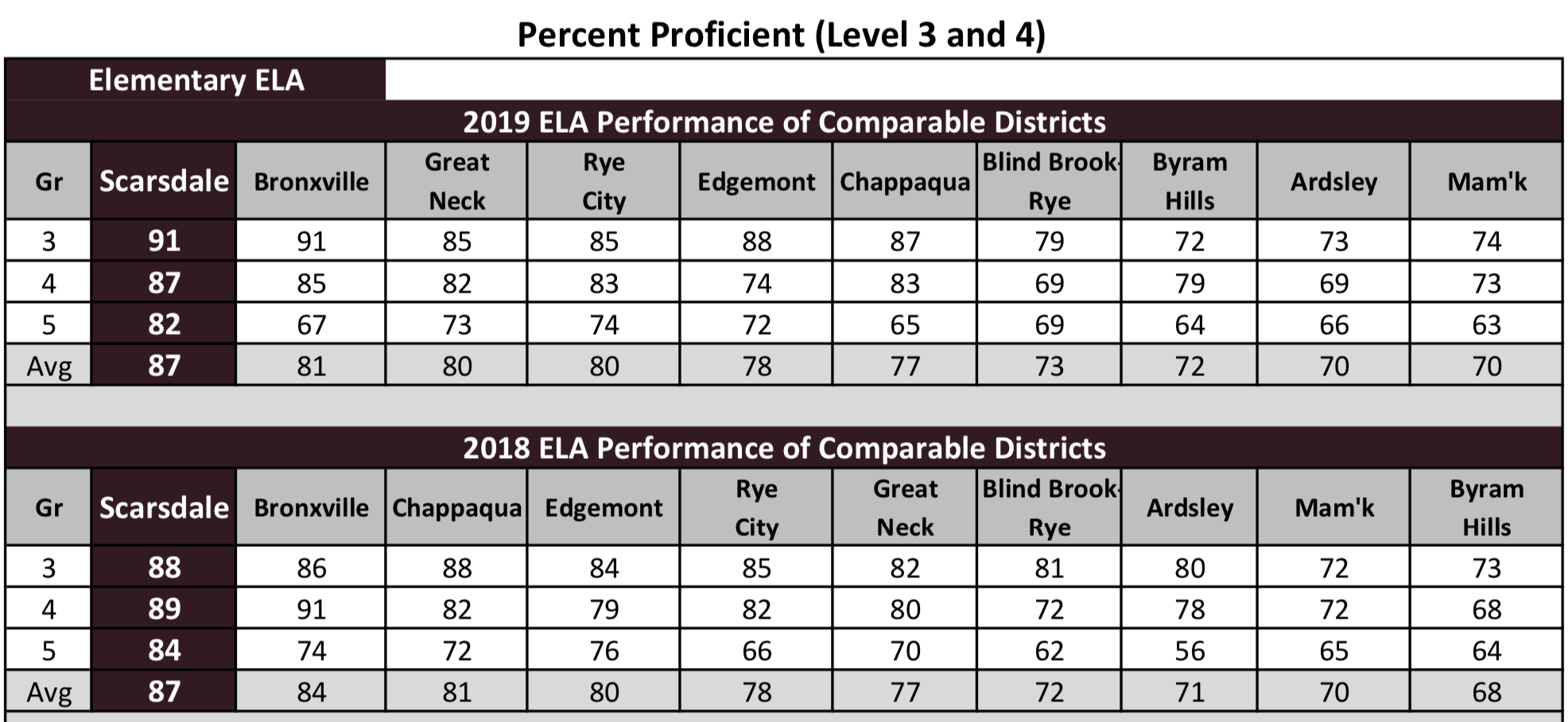
In addition to the college admissions tests and the state tests, Scarsdale has also developed their own assessments for English, math, science and social studies in the elementary school, and assessments for middle school and high school students across various disciplines, including the performing arts and physical education.
McIntosh reviewed improvements to New York State educational standards that emphasize the learning process, inter-disciplinary thinking and the reduction of redundancies. These new standards focus on moving through the content, rather than rote memorization of facts. Once learned, these concepts can be applied across many disciplines. He called the process, “collaboration and vertical articulation.” To illustrate this point, McIntosh said the teachers of biology, chemistry and earth science at the high school are exploring how they can teach cross-cutting concepts across science classes.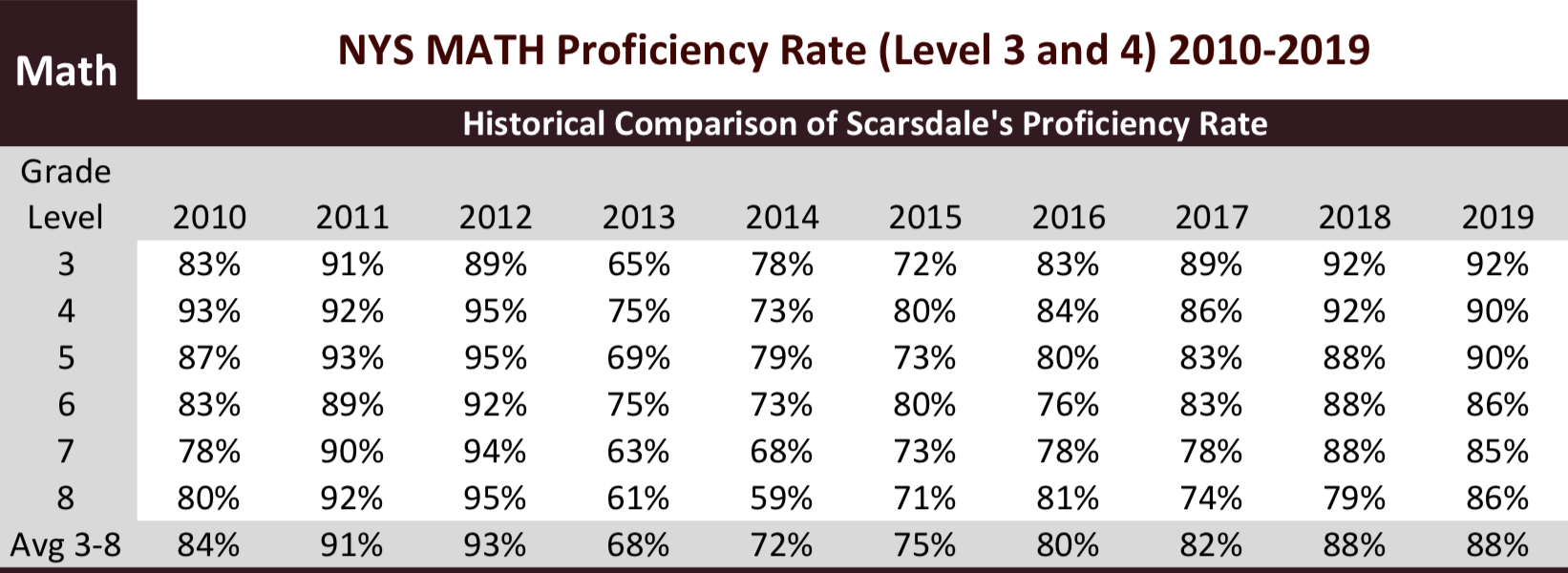
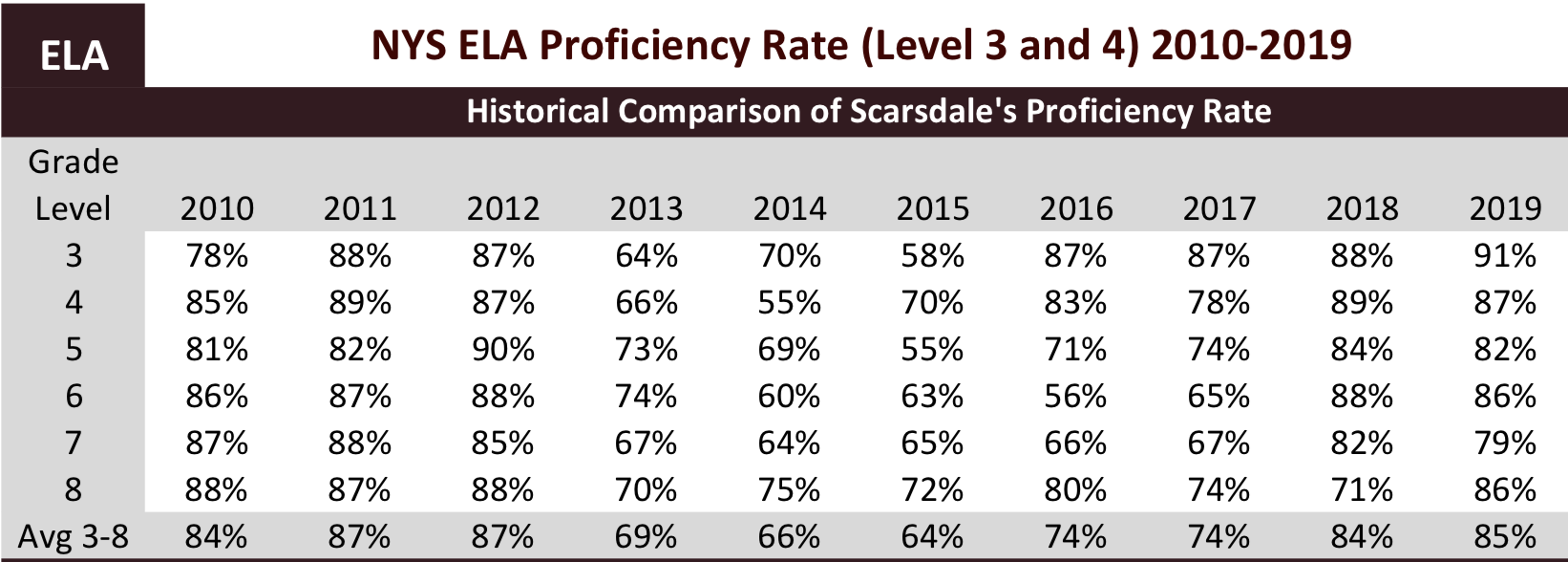
There’s even more data to parse online. Watch the presentation here:







